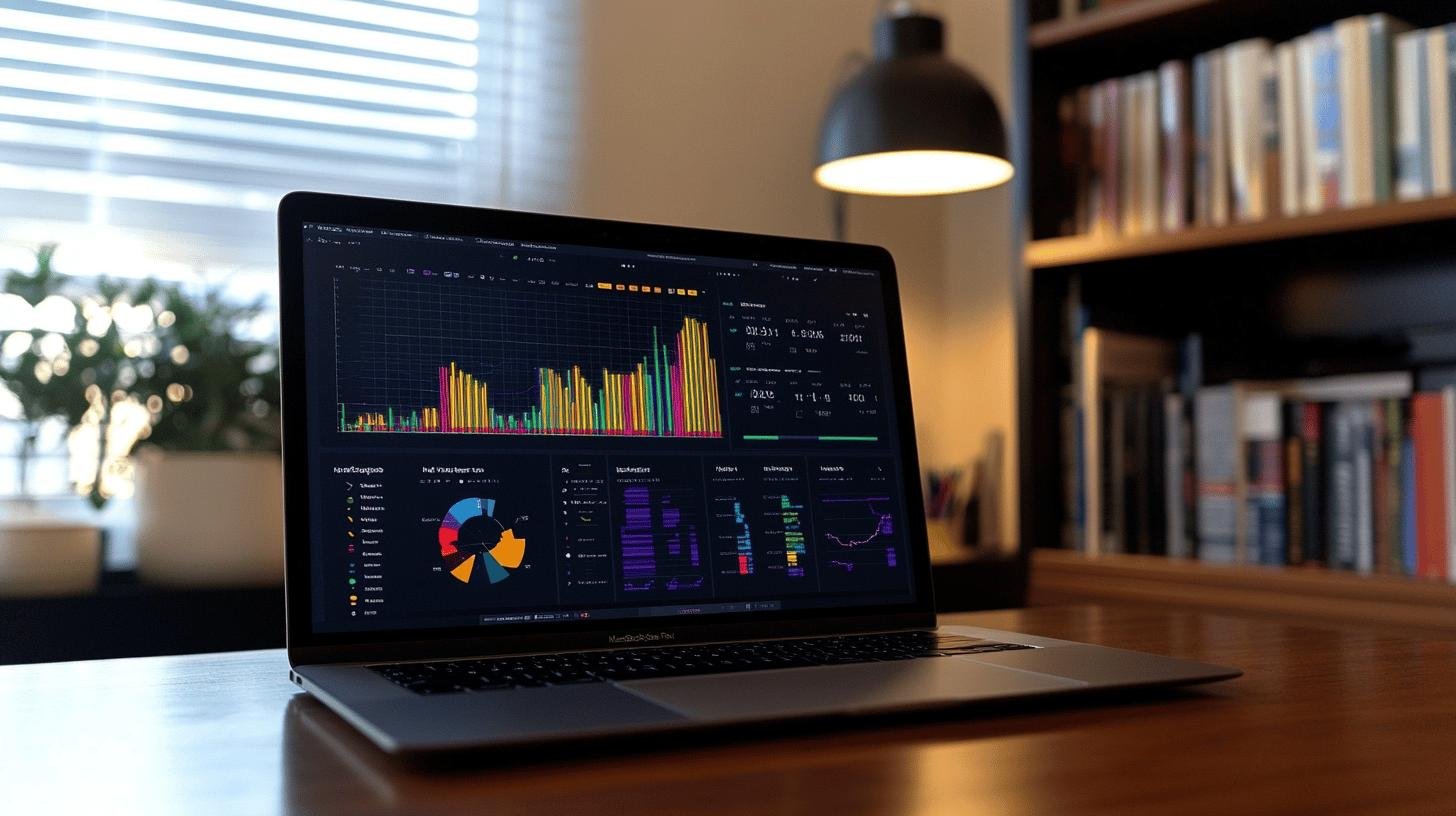Ever wondered how businesses make quick decisions based on piles of data? It’s all thanks to AI analytics. Imagine a tool that not only processes data but also explains what’s happening and what could happen next. That’s AI analytics—turning raw data into actionable insights, fast! In this post, we’ll dive into what AI analytics is all about and why it’s revolutionizing decision-making. Let’s break it down! 😊
What is AI Analytics?
AI analytics is like having a super-smart assistant that helps make sense of overwhelming data. By using artificial intelligence (AI), it processes information, pulls out valuable insights, and makes predictions. Think of it as solving a giant puzzle—but with AI, you get a picture on the box to help you out.
One great aspect of AI analytics is how it automates the heavy lifting. Instead of spending hours manually sorting through data, AI analyzes patterns, trends, and even unexpected events. It explains why something happened and predicts what might happen next—like a crystal ball that’s grounded in data science!
Key Functions of AI Analytics
- Data Processing: Processes large datasets quickly.
- Pattern Detection: Spots trends and recurring patterns in data.
- Anomaly Detection: Identifies unusual or outlier data points.
- Predictive Analytics: Forecasts future trends based on historical data.
- Natural Language Queries: Allows easy interaction using plain language questions.
Benefits of AI Analytics

The benefits of AI analytics are clear, starting with how it simplifies data processing. Imagine crunching months’ worth of data in minutes—what would take days or weeks manually is done in moments with AI. This enables faster decision-making, improving overall productivity.
Beyond speed, AI analytics enhances decision-making. Since AI rapidly analyzes data, it provides timely, accurate insights. This is critical for businesses that need to act quickly. Picture a coach adjusting strategies based on real-time stats—that’s how businesses use AI to stay agile.
Another major benefit is how AI analytics makes data more accessible. Previously, only data scientists could interpret complex data sets. Now, AI tools translate data into understandable insights for everyone, democratizing decision-making across teams.
Types of AI Analytics Tools
There are several AI analytics tools that make working with data a breeze. Here’s a look at a few:
- Luzmo: Known for being user-friendly, especially for SaaS companies needing data visualizations. Its Instachart feature allows users to create interactive dashboards with minimal input.
- Tableau: A favorite among data scientists, Tableau supports R, Python, and MATLAB, allowing for deep analysis and AI-powered predictions.
- Microsoft Power BI: Excellent for analyzing text data, such as reviews or social media posts. Its features include sentiment analysis and language detection.
- KNIME: An open-source tool with a drag-and-drop interface, perfect for applying machine learning models without coding expertise.
- Databricks: Combines data lakes and warehouses, ensuring smooth AI analytics application and data management.
- AnswerRocket: An AI assistant that processes questions in plain English and delivers clear insights and recommendations.
Popular AI Analytics Tools
- Luzmo: Visualizations for SaaS platforms.
- Instachart: Quick dashboards with minimal effort.
- Tableau: Deep analysis with AI predictions.
- Power BI: Text data analysis and sentiment tracking.
- KNIME: Drag-and-drop interface for machine learning.
- Databricks: Unified data management for AI models.
- AnswerRocket: AI assistant for easy data queries.
How AI Enhances Predictive Analytics

Predictive analytics is where AI analytics shines, acting like a time machine for your data. By studying historical data, AI can forecast trends and behaviors, allowing businesses to anticipate future developments. Whether it’s predicting stock shortages or forecasting customer demand, AI analytics gives businesses an edge.
AI models can detect patterns in massive datasets and highlight crucial trends. These insights help businesses make decisions before issues arise. For example, AI can identify why specific products sell better at certain times, allowing companies to capitalize on trends.
Benefits of AI in Predictive Analytics
- Proactive Decisions: Helps anticipate and act on trends before they happen.
- Pattern Detection: Identifies trends and correlations across data.
- Anomaly Detection: Spots unusual data points that could signal potential problems.
- Optimized Forecasting: Helps with tasks like inventory management and sales goals.
Real-World Applications of AI Analytics
AI is already changing the game across industries:
- E-commerce: Online stores use AI analytics to study customer behavior, allowing them to suggest products based on user preferences. Ever notice how shopping platforms seem to know what you want before you do? That’s AI at work.
- Finance & Insurance: Financial institutions use AI to analyze market trends, helping to spot investment opportunities. Insurance companies rely on AI to detect fraud and assess risks faster and more accurately.
- Healthcare: Medical professionals use AI analytics to analyze patient data and medical records, leading to more personalized treatments and accurate diagnoses.
| Industry | Use Case |
|---|---|
| E-commerce | Customer insights and market analysis |
| Finance | Identifying investment opportunities and streamlining processes |
| Insurance | Fraud detection and risk mitigation |
| Healthcare | Enhancing decision-making and personalized treatment plans |
Challenges and Future Trends in AI Analytics

While AI analytics has tons of potential, it’s not without its challenges. Data quality is key—garbage in, garbage out. Without clean, accurate data, insights can be misleading. Privacy and security also pose significant risks, as data breaches could expose sensitive information.
Another challenge is the need for skilled personnel to manage these AI systems. Even though AI handles the heavy lifting, human oversight is essential to keep everything running smoothly.
Looking forward, the future of AI analytics is bright. One exciting trend is the use of synthetic data, artificially created to train AI models. This will enable faster development and improve AI’s accuracy. We also expect deeper integration of AI into everyday business operations, offering real-time insights and more automation.
Future Trends in AI Analytics
- Synthetic Data: AI models trained on artificial data for faster development.
- Real-Time Insights: Instant data analysis for quicker decisions.
- Increased Automation: More tasks being handled automatically by AI.
Final Thoughts
AI analytics is transforming how we handle data—from speeding up decision-making to offering predictive insights. We’ve explored its many benefits, like simplicity, productivity boosts, and real-world applications across industries like finance, healthcare, and e-commerce. Although challenges like data quality and security exist, the future is promising with advancements like synthetic data and enhanced automation.
Embrace AI analytics—it’s revolutionizing the way businesses understand and use data! 😊
FAQ
What is AI in analytics?
AI in analytics enhances data analysis by automating processes, uncovering insights, and speeding up decision-making. It leverages machine learning and algorithms to analyze data, answer questions, and predict future outcomes.
What does an AI analyst do?
An AI analyst uses AI tools to process and analyze data, generate insights, and produce reports. They ensure data quality, build predictive models, and help improve decision-making processes within organizations.
What is the salary of AI data analytics?
AI data analysts can earn from $70,000 to over $120,000 annually, depending on experience, location, and specific role within the organization.
What are AI analytics tools?
AI analytics tools process and analyze vast amounts of data to generate insights. Popular tools include Luzmo, Tableau, Microsoft Power BI, KNIME, Databricks, and AnswerRocket.
Are there free AI analytics tools?
Yes, some AI analytics tools offer free versions or trials, such as Microsoft Power BI and KNIME. These can help you get started without any upfront costs.
Are there courses for AI analytics?
Yes, many online platforms like Coursera, edX, and Udacity offer AI analytics courses. These courses cover topics from basic data analytics to advanced machine learning techniques.
What are AI analytics jobs?
AI analytics jobs include roles such as data analyst, AI specialist, machine learning engineer, and data scientist. These positions focus on using AI to improve data analysis and decision-making processes.
What is an AI analyst?
An AI analyst is a professional who applies AI algorithms and tools to analyze data, uncover insights, and support business decisions. They work with datasets and create models to predict future trends.
What is AI analytics software?
AI analytics software uses AI and machine learning to process and analyze data. It helps businesses generate insights, create reports, and make data-driven decisions more quickly and accurately.
What is the salary of an AI data analyst?
The salary of an AI data analyst varies but generally falls between $70,000 and $120,000 per year. This can change based on experience, location, and job role specificities.




